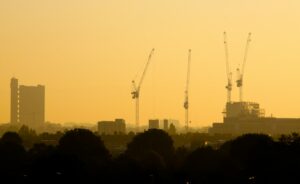Last week we reported on the new partnership between Air Canada and IAGOS (In-Service Aircraft for a Global Observing System (IAGOS) whereby the airline would carry diagnostic sensors to assist the international non-profit organisation in monitoring air quality around the world.
Just days into the operation the aircraft was detecting exceptional levels of carbon monoxide over Canada emanating from the wildfires currently raging in Alberta and now NASA have published more information on the impact of this extreme phenomenon.
The NASA report pulls the reader in from the first paragraph: ‘For remote sensing scientists who track the movement of smoke plumes, May 2023 has been a wild, memorable month due to extreme fire activity in northwestern Canada.’
There is an area of Canada that has an annual risk of wildfire, at the point between snow melt from the Rockies and the beginning of Spring growth. In this small window dry forest undergrowth is exposed.
This May however, that window coincided with exceptionally hot and windy weather which escalated what would normally be localised fires into significant blazes that burned continuously across vast areas. By May 24th 400 square miles had been scorched.
The interesting element from NASA’s observations is how the black carbon from those fires has been distributed across the continent. Over the course of the fire outbreak, large rivers of smoke swirled into two separate extratropical cyclones (huge storm events), and darkened skies across large swaths of North America for weeks.
Michael Fromm, a meteorologist at the U.S. Naval Research Laboratory said: ‘This is rare to see with smoke plumes. It is much more common to see with dust in parts of Asia and the Middle East. There’s reason to think that infusions of smoke into extratropical storms could do something similar, but I’m not aware of any peer-reviewed publications that detail a case like that. I suspect this event in Canada will be an event we study and publish on for years.’
The unusually hot and intense fires generated strong updrafts that fueled pyrocumulonimbus clouds which lift smoke from the surface and channel large volumes of it into the lower stratosphere where stronger, higher-level winds disperse it widely.
Jessica McCarty, chief of the biospheric sciences branch at NASA’s Ames Research Center said: ‘This event is a good reminder of how interconnected we are. What happens with wildland fires at high latitudes in boreal forests doesn’t just stay there. The air quality and climate impacts affect all of us living in the temperate zone as well.’

















Leave a Reply